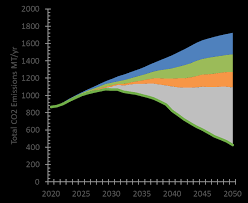How Does Rising Temperature Affect Electricity Demand?

Rising temperature is a common problem around the world. This in turn leads to many other problems such as devastating demand for electricity. In today’s world, the internal environment is created as an isolated arrangement that largely depends on electricity. (To put together these electrical systems are made. They can be made in their right capacity through electrical estimating services). This creates certain amounts of demands as per the scope and capacity of building structures.
What is Rising Temperature?
Due to various human activities, the temperature all around the world is steadily rising. This rate will breach one and a half degree centigrade by the end of the year. This is affecting everything around the world for the worse. Its effects encompass every aspect of life and the earth itself. As a result, life and livelihood are becoming more and more difficult.
Common Causes and Affects
Humans particularly in developed countries are carrying out activities that are destroying the natural habitat and devasting environmental conditions. This leads to a rise in temperature called global temperature.
Its leading causes are; industrial activities that give harmful industrial chemicals into water channels, air & land, carbon emissions that provide a greenhouse effect for the earth by forming an envelope around it, and nitrate & sulfide emissions that affect the air and cause harmful effects.
They generate disturbing effects on the earth and life on it. These include; suffering and deaths of wildlife, affecting crops and damaging their nutritional value, sea levels rising, glacier melting, heat strokes, unbearable sun for life on earth, and other problems. Among many others, it affects the demand for electricity.
We need to understand this affected demand in detail…
How Does it Affect Electricity Demand?
Humans now live in insulated and isolated building structures. These building structures build their own isolated and regulatable internal environment. This is built with isolation materials, a number of devices, and their fuels. In today’s world, electricity is the only fuel used by the majority of people around the world. This makes electricity and its demand in a centralized position. While its demand is affected by raising temperatures. It works as:
As temperature rises, the systems and devices installed have to work harder to regulate the internal environment to the required outcome. This pushes the devices to function more than their normal capacity and that in turn demands more fuel among other things; which is electricity. This way its demand increases.
Similar to the previous ones, the new condition may require installing new devices to battle the condition. These new devices required fuel which is electricity. This way, it increases the demand for the overall building structure and neighborhood.
To solve the same problem, there is another solution. This includes installing bigger devices that come with greater capacities, in place of older smaller ones. These devices come with higher requirements for electricity and thus automatically increase demand for electricity in the concerned building structures.
In such conditions, another important factor is the seamless availability of the systems and devices. Any small breakage could lead to undesired and unbearable conditions in the isolated environment. Thus, electricity is needed in parallel supplies so that if one goes off there is some backup to keep it all working. This back-up creates resultantly creates more demand.
Importantly, this applies to all the building structures in any neighborhood, a town, a city, or even a state such as Florida or Texas rather than just one building structure. This creates a huge multitude of demand for the local gird and systematically the whole power generation arrangements.
Also, it becomes more burdensome with the passage of time. Both the factors that contribute to raising temperatures and the use of these systems to counter them are continuously devasting the condition, and creating more demand for powerful and isolated indoor environments. This creates an endless increase in demand over time.
These are some of the reasons and manner in which raising temperature affects the demand for electricity.
Conclusion
Temperature is raising all around the world due to different human activities and factors. This leads to various problems such as an increase in demand for electricity. This is mainly because electricity runs most of the devices and systems in building structures to create an isolated environment. An effective way to manage it is through proper construction that includes insulation materials. (This can be eased through proper estimation services that are even available specific to locations such as Florida construction estimating services). This increase is in different manners and outcomes; that are discussed in the article. This could be for one building structure and for vast neighborhoods or settlements.



